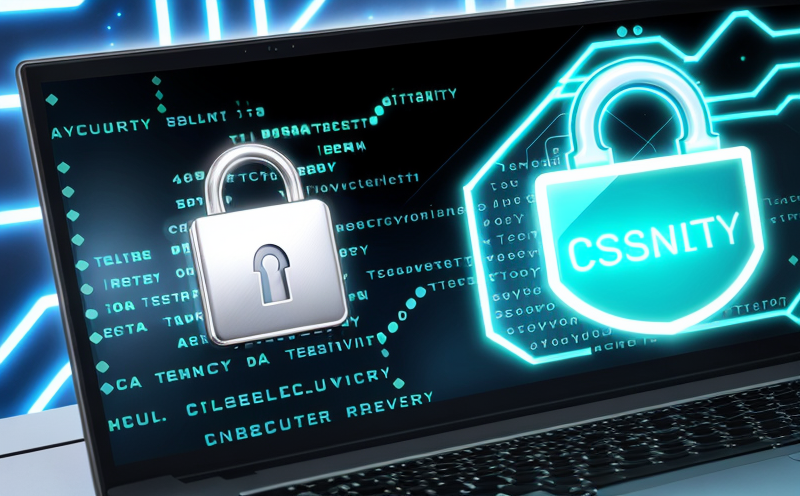EN 303 645 Cybersecurity Baseline for Consumer IoT Devices
The European standard EN 303 645 sets out the cybersecurity baseline requirements specifically targeting consumer internet of things (IoT) devices. This is a critical framework designed to ensure that connected products, such as smart home appliances, wearables, and other consumer electronics, are safeguarded against potential security threats.
These requirements are essential for protecting users' privacy and data integrity in an increasingly interconnected world. Compliance with EN 303 645 is mandatory for manufacturers of consumer IoT devices intended for sale within the European Economic Area (EEA). Failure to meet these standards can lead to product recalls, legal penalties, and reputational damage.
The standard covers several key areas including:
- Security requirements for wireless communication
- Data protection mechanisms
- User authentication methods
- Secure software updates
- Compliance with relevant European Union regulations like GDPR and NIS Directive
The implementation of EN 303 645 involves a comprehensive approach to cybersecurity that encompasses hardware, firmware, and software. This ensures that all components of the IoT device are secure from potential vulnerabilities.
Manufacturers must also ensure that their devices undergo rigorous testing to verify compliance with the standard's requirements. This includes:
- Vulnerability assessment
- Cybersecurity analysis
- Data privacy evaluation
- Secure boot and execution verification
- Network security checks
The testing process is crucial in identifying any potential weaknesses that could be exploited by malicious actors. It also helps to ensure the integrity of user data, preventing unauthorized access or breaches.
| Standard Number | Description | Date of Publication | Relevance |
|---|---|---|---|
| EN 303 645 | Cybersecurity Baseline for Consumer IoT Devices | 2019-12-01 | Main Regulatory Framework |
| ISO/IEC 27001 | Information Security Management System (ISMS) | 2013-10-01 | Complementary Framework for Information Security |
| EN 30585 | Security of Connected Consumer Devices | 2020-06-01 | Supplementary Guidelines on Network Security |
The standard also emphasizes the importance of secure software updates, which are essential for maintaining long-term device security. Regular updates help to patch vulnerabilities and ensure that devices remain protected against new threats.
In summary, compliance with EN 303 645 is not just a regulatory requirement but a vital component in ensuring consumer trust and safety. By adhering to this standard, manufacturers can build robust cybersecurity measures into their IoT products, thereby protecting both users and the devices themselves from potential cyber threats.
Applied Standards
| Standard Number | Description | Date of Publication | Relevance |
|---|---|---|---|
| EN 303 645 | Cybersecurity Baseline for Consumer IoT Devices | 2019-12-01 | Main Regulatory Framework |
| ISO/IEC 27001 | Information Security Management System (ISMS) | 2013-10-01 | Complementary Framework for Information Security |
| EN 30585 | Security of Connected Consumer Devices | 2020-06-01 | Supplementary Guidelines on Network Security |
Quality and Reliability Assurance
- Comprehensive testing of all security features
- Regular software updates and patches
- Data encryption verification
- User authentication protocol validation
- Vulnerability scanning for potential weaknesses
- NIST Cybersecurity Framework compliance assessment
- Continuous monitoring and evaluation of cybersecurity measures
- Third-party audits to ensure adherence to EN 303 645 requirements
The testing process is designed to identify any gaps in the security protocols and address them proactively. This ensures that IoT devices meet not only regulatory standards but also exceed user expectations for safety and reliability.
Quality assurance processes are crucial in maintaining a high level of trust among consumers. By adhering strictly to EN 303 645, manufacturers can demonstrate their commitment to cybersecurity and data privacy, thereby fostering consumer confidence.
Use Cases and Application Examples
The application of EN 303 645 extends across a wide range of IoT devices used in the smart home sector. These include but are not limited to:
- Smart speakers
- Smart thermostats
- Home security cameras
- Smart lighting systems
- Wearable fitness trackers
- Automated kitchen appliances
The standard's requirements are particularly important for devices that interact with sensitive personal information or have access to the internet. For instance, smart speakers often collect voice commands and user preferences, while home security cameras may capture video footage of private spaces.
In practice, manufacturers must implement robust cybersecurity measures at every stage of product development. This includes:
- Designing secure hardware
- Implementing strong encryption protocols
- Developing secure software interfaces
- Ensuring secure data storage and transmission methods
An example use case would be a smart thermostat that connects to the internet. The manufacturer would need to ensure that all communication between the device and external servers is encrypted, preventing unauthorized access. Additionally, regular updates to the software should include security patches to address any newly discovered vulnerabilities.





